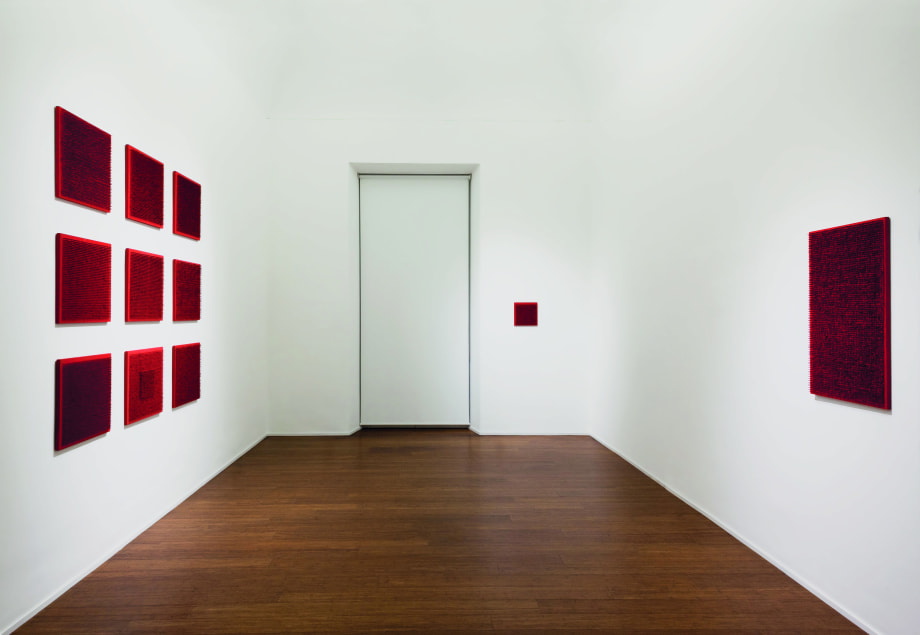Sponsored by the municipality of Genoa, and by the Institut Français-Italia the retrospective on the French artist aims at providing anthological andchronological evidence of his artistic path during the Sixties and Seventies. "In 1957 I met Yves Klein and his monochromatic canvas. I was impressed by the beauty in his painting and I didn't find his problem unusual: I was simply excited". This is what Bernard Aubertin writes in 1961 in his text Esquisse de la situation picturale du rouge dans un concept spatial, from which this exhibition takes the title, and that was published on the 3rd issue of Mack and Piene magazine "Zero". His monochromatic pictures are red from the very beginning. Red is an energetic colour, chosen by all the avant-gardes,futurism and soviet art ahead, for its original assertive energy. This is what Kandinskij aims at teaching in his work "On the Spiritual in Art" where he asserts: "Red interiorly exerts the action of a lively, perky and agitated colour…. Despite all its energy and intensity it still bears a steady note of immense strength, as if it were aware of its aim". The boundaries of Aubertin's world are well traced in the memorable exhibition "Nul" which took place in 1962 at Stedelijk Museum in Amsterdam, where his works were displayed with others by Fontana, Schonhooven, Mack, Uecker, Haacke, Peeters, Arman, Armando, Mavignier, Castellani, Manzoni, Dadamaino, Lo Savio, Dorazio. As Flaminio Gualdoni states in his introduction "According to the requirements of his time Aubertin eludes the execution and at the same time the rhetoric of ability and of the expression of one's own intimacy while he finds in the use of red an authentic dynamic sensation, an energy arising from genuine distilled vitality. Like blue in Klein, red in Aubertin bears its own history as a whole, made up of the idea of blood, of love transcending its physicality, of an immaterial and powerful energy. Paracelso argues: each element has its own colour: earth is light blue, water is green, air is yellow, fire is red."
A new precious book belonging to ABC-ARTE bilingual series, in Italian and in English, focuses on the exhibition. It contains the critical review of the curator Flaminio Gualdoni and of Dominique Stella , as well as photographs, insights, documents about the artist's issues and an abstract from the article published on the 3rd issue of Mack and Piene magazine "Zero". ABC-ARTE would like to thank the Rosenberg Gallery for its fundamental contribution in the collection of documents and equipment used for the exhibition.

